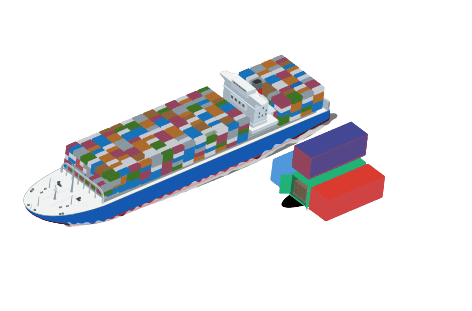In logistics and freight transport, a crucial factor in calculating freight costs is cubic weight. Bulky cargo occupies a significant space in vehicles such as planes, trucks, ships, and others, directly affecting the transport capacity. In this article, we will explain in detail how to calculate cubic weight, an essential metric for logistics planning and cargo management in international trade.
What is Cubic Weight?
According to the definition of the National Land Transport Agency, cubic weight is the relationship between the weight and volume of the cargo to be transported. This metric is widely used in the transport industry and its primary function is to indicate the space occupied by the cargo within the vehicle. The value of the cubic weight is obtained through a formula that takes into account the length, width, and height of the goods, as well as the cubing factor used by the carrier.
Understanding the Cubing Factor
The cubing factor is a constant number that represents the “ideal weight” in relation to 1 cubic meter (1 m³) for each type of transport vehicle. These values are pre-established and can vary depending on the mode of transportation used. Here are the most common values for some modes:
- Road: 1 m³ = 300 kg
- Air: 1 m³ = 166.7 kg
- Maritime: 1 m³ = 1000 kg
It is worth noting that these values may vary depending on the specific characteristics of the product or according to the policy of each carrier.
How to Calculate Cubic Weight
The calculation of cubic weight is performed using the following formula:
Cubic Weight (CW) = Length (meters) x Width (meters) x Height (meters) x Cubing Factor (kg/m³)
Let’s illustrate the calculation using air transport:
Suppose the volume of the merchandise is: 0.8 m (length) x 0.8 m (width) x 0.8 m (height)
The cubing factor used is: 166.7 kg/m³
Therefore, the cubic weight for air transport will be: 0.8 m x 0.8 m x 0.8 m x 166.7 kg/m³ = 85.35 kg
Important Note: Units of Measurement
When calculating cubic weight, it is essential to pay attention to the units of measurement used. The dimensions of the cargo should be expressed in meters (m), while the cubing factor is presented in kilograms per cubic meter (kg/m³).
The Importance of Cubing in Freight Transport
Proper evaluation of cubic weight is of utmost importance to optimize the freight process. Through this calculation, it is possible to avoid transporting bulky but lightweight cargo, which would waste the vehicle’s capacity. Similarly, it avoids the transportation of small yet extremely heavy goods that would occupy disproportionate space in the vehicle.
To understand the relevance of cubic weight, we can make an analogy with a well-known question: what weighs more, 1 kg of lead or 1 kg of feathers? Both have the same weight, but feathers take up much more volume than lead. It is this difference in volume that cubing seeks to balance in freight transport.
Conclusion
Mastering the calculation of cubic weight is essential for companies involved in logistics, supply chain, and international trade. Understanding how this metric influences freight costs and transport efficiency is fundamental for making strategic decisions and ensuring the optimization of logistics resources.
Therefore, when planning cargo transport, make sure to correctly calculate cubic weight and consider the specificities of each mode to ensure more efficient and economically viable logistics operations.
What is Cheap2Ship?
Get to know Cheap2Ship, a technology company specializing in logistics and international trade. Through our advanced freight management and quoting platform, medium and large-sized companies have experienced a significant increase in operational efficiency and a reduction in logistics costs.
Our commitment is to provide greater transparency in costs related to current freight providers, such as shipowners, freight forwarders, and carriers. With this, our clients can make more informed and strategic decisions for their businesses.
To learn more about our innovative solutions, visit our website and follow us on social media. There, you will find relevant content about international trade, logistics, and supply chain. We are ready to drive your company’s success in the global market. Join us and discover how we can make a difference for your business.

